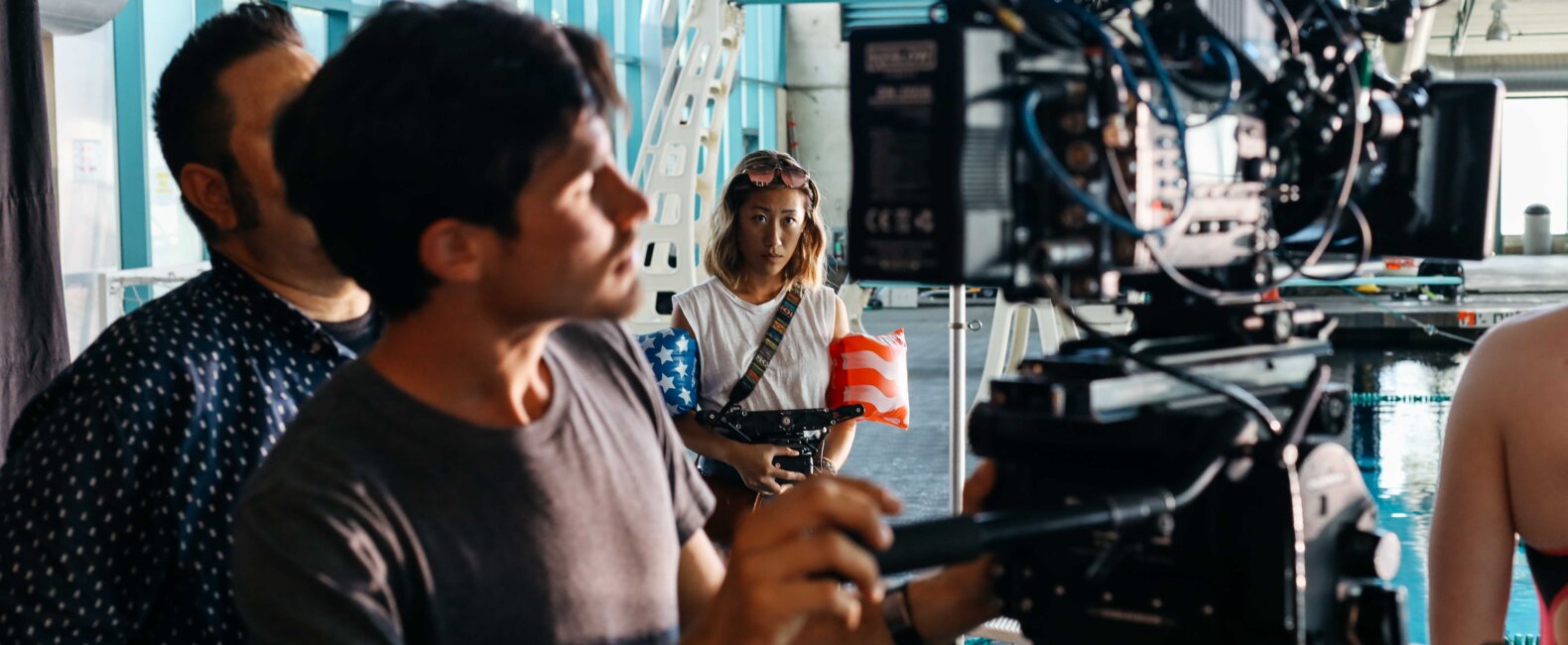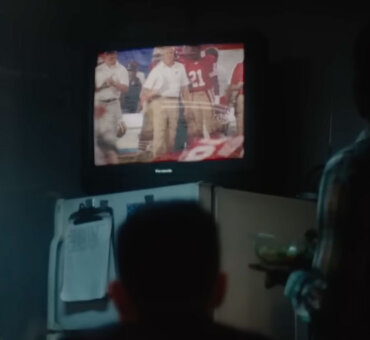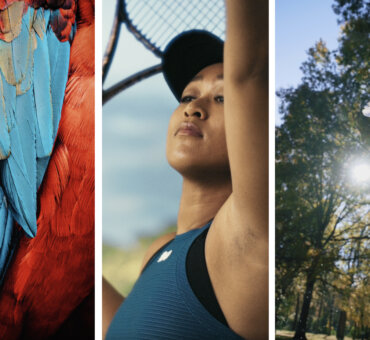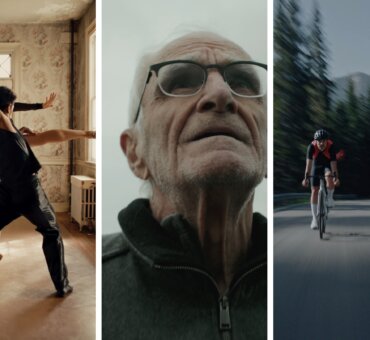Welcome back to our second article in a series exploring The Commercial Directors Diversity Program, or CDDP. The program’s mission is to advance diversity and representation in commercial directing by selecting five fellows and connecting them with high-level mentors to produce a spec ad. In our first entry, we talked with directors Christopher Nataanii Cegielski and Sofia Garza-Barba about their involvement with the program and expectations heading into production. You can read their article here.
In this installation, we had the opportunity to speak with Vanessa Black and Jane Qian about the specifics of directing their productions and how they overcame challenges to make them a reality.
The CDDP’s mission isn’t some arbitrary, feel-good goal. It’s not promoting diversity for diversity’s sake. Its organizers believe, along with Vanessa Black and Jane Qian, that having diverse perspectives in directing makes for a better commercial industry in general.
“It’s not about hiring me just to put a woman behind the camera,” Vanessa told us. “It’s about adding our viewpoint to the mosaic of society. The advertising we make creates the society we live in. I want to be a part of that conversation in a meaningful way.”
And, to be a part of a conversation, you need to have a stake in the game.
That’s where this second entry into our series on CDDP begins. We’ve talked about the expectations heading to production, but now that the program’s five fellows have wrapped, they have perspectives on what it takes to pull off a project at the highest level.
Directing in the commercial industry, maybe more so than any other, is insular. And, for people who’ve been pushed to the margins in the past, those closed-door meetings and insider conversations can seem intimidating. They can create a mystique and fog around the actual process, distorting how potential directors see themselves and their qualifications.
“As a director, unless you’re on-set you don’t know what the entire process is,” Jane told us. “A lot of the process is behind closed doors in the commercial industry. This program has been able to open some of those doors for us.”
Luckily for us, Jane and Vanessa are holding the door open for a moment. They’re offering to share their experience of directing alongside agencies to execute high-level commercial projects. We’ll share their finished projects and offer a few takeaways from their productions—along with a bonus note from Knucklehead’s Managing Director Cathleen Kisich.

Optimize Your Concept
As a director, it’s your job to create—and often times that means creating an optimal environment for the end production. Both Jane and Vanessa encountered this firsthand when developing their concepts, but in very different ways.
For Vanessa, her initial concept was to represent an international market with her spec spot. But as time, budget, and execution all came together, she decided to adapt her concept so it could represent the best version of itself. Instead of going broad, she stripped everything out to explore a moment told through a running lens: When you face failure do you give up or push on?
“We ended up shifting everything around with our limitations of a spec,” Vanessa told us. “The main goal was to make the best running spot and keep my original storyboards, which were made up of story beats, designed transitions, and the sound design.”
By narrowing in on her creative vision, she was able to distill a concept to the strongest version of itself, and also execute in a way that would work for a potential client.
“That’s what we train for, right? If I would have had to do that five years ago, I might have been a total stress case,” Vanessa said. “But, that’s what the director does. They lead the ship when things change; they come up with the best solutions.”
Sometimes that means making changes you didn’t anticipate, being honest with yourself and the people you’re collaborating with.
For Jane, after reading scripts provided by Saatchi & Saatchi, she was inspired to seek out a Paralympian who she could focus on for her own spot. She tracked down Paralympian Colleen Young, who was born with albinism and is legally blind, and developed a series of pre-production questions heading into the shoot. What she found, though, were answers she didn’t expect.
“I asked her, ‘Were you bullied when you grew up?’ and questions that would draw out a more victim-esque narrative,” Jane told us. “But, her answers were not what I expected. She was incredibly supported growing up. Her parents pushed her to do everything she dreamt of. Kids at her school didn’t treat her any differently. She had nothing negative to say.”
So, when the vision she had for the spec ad were quickly swept away, she had to rethink the direction and the preconceived notions she had as well.
“I stepped back a bit and reflected. I realized that what we have here is actually perfect for everything that I’m trying to do. Everything that the CDDP is trying to do,” she said. “Colleen, as a Paralympian, she has a different voice from what we’ve seen in the media. She’s an incredible athlete. She didn’t have a sappy story. So, I created a spot that was like an anthem that could have starred Michael Phelps or any traditional male athlete.”
For both of these directors, the adaptations were just hurdles to jump heading into production—they helped create what the final product would become. So, when you face challenges heading into your own productions, maybe see them for what they are—inevitable moments of growth.
Be Creative on a Micro Scale
It’s easy to be cynical about commercial projects. With clients, budgets, products, and creative briefs, it sometimes seems like all of the creative can be sucked out of the filmmaking process. But, as Vanessa pointed out, it’s quite the opposite.
In fact, the constraints imposed throughout the directing process force them to be creative in entirely new ways. How can you adapt your process and vision to fit your client’s goals? Vanessa found that creativity happens on a micro scale, where every second matters, as opposed to her previous long form work.
“In a 30-second spot, everything matters. Every beat matters. I spent a lot of time counting seconds and cuts. If you have 12 shots, every single one of those frames needs to be flawless and constructed,” she told us. “You have to construct every detail, because those details make up the story you are telling in 30 seconds. The audience needs to know all the facts of the world instantly. It’s really fun—almost mathematical.”
There’s no time for exposition, for breathing room in commercial shoots, so directors must be ruthless with their cuts and time. As opposed to narrative, documentary, or even branded content, there’s no forgiveness for even a hint of detour. Clear communication when directing on-set is key as well.
“When you’re directing, you have to think about everything,” Vanessa adds. “Say you’re trying to get a reaction, like shock. You could do that in one second or five seconds. Someone could say a line like, ‘I love cheeseburgers’ a dozen different ways. It sounds silly, but it could affect the timing of the whole piece. You know your deliverable’s run-time going into it, and you have to tell that story in 6, 15, 30, or 60 seconds—and sometimes all of those formats for the same client.”
For directors, the transition to commercials is the difference between painting and sculpting. In the former, you have a blank canvas—in the latter, you have to remove every piece that isn’t essential to the final form.
High-Level Has Its Advantages

When we talked with Christopher and Sofia in our first article, they both mentioned that they were used to wearing many hats when directing indie productions. Sometimes all of the hats. But, in commercial filmmaking, they had to learn to let go of control a bit and trust their collaborators.
Of course, as Jane quickly learned, that comes with an upside, too.
Her production was gutsy, to say the least. It involved flying in the talent, renting a space, and shooting highly technical scenes in an underwater environment. All of these moving parts led to this inevitable reaction:
“I didn’t think I was going to pull it off,” Jane told us with a laugh. “The night before the shoot, I was freaking out and laughing about the schedule, thinking, None of this is possible. There’s absolutely no way.”
Even the comfort of working with her usual DP was taken away when they decided to collaborate with Gaul Porat.
“It took me a really long time, up until the day of our shoot to fully surrender and trust him. And that’s what I learned through the CDDP,” she said. “Working with new people is so important because they bring you new lessons and perspectives.”
When you’re working with agencies and brands at a high level, the creatives you’re working with are good at what they do. It’s as simple as that. It’s also why Jane was able to execute her vision in what seemed like an impossible timeline.
“Knucklehead had my back throughout the entire process,” she added. “They called in every favor and made sure that the vision I had going into this wouldn’t shrivel away due to financial restraints.”
As Jane learned that she could trust her collaborators at the highest level, she also learned that she could pull off things she wouldn’t have dreamt of in an indie project when surrounded by people who truly believed in her and her vision. A production is only as strong as its weakest link. But, when you’re surrounded by a production company and crew operating at the top of their game, they can pull more weight than you think.
In this business, everybody can sell. We can all bullshit our way through something. But, to have a true creative vision is everything.
Your Vision is Everything
When we spoke with Knucklehead’s Cathleen Kisich, Jane’s mentor in the program, she had plenty to say about her work, but her thoughts on creative vision struck us the perfect way to wrap this article up.
Heading into the commercial world, there are plenty of things you won’t know. There are always going to be closed doors, obstacles, and challenges. But, if you can remember one thing, it should be this: You’re directing this project for a reason. No one else has your vision and your creativity.
“The thing I look for the most is a strong creative sensibility,” Cathleen told us. “I look for somebody who doesn’t just say ‘yes’ to everything. If Jane didn’t feel like something was appropriate for the project, she would push back on me. That can be frustrating, sure, but she is the director. That’s the thing. In this business, everybody can sell. We can all bullshit our way through something. But, to have a true creative vision is everything.”

In the commercial world, there are a lot of egos. There’s a lot of posturing. In fact, maybe it’s the entire reason why a program like the CDDP needs to exist in the first place—to break down some of those egotistical walls and preconceived notions and open the doors for new perspectives.
And, more than new perspectives, maybe it’s about new choices, too.
“If I have the opportunity to play the game and be in the commercial world, I’m going to be making choices—from casting to locations to a character’s story arc—that are going to be different than the people playing the game right now,” Vanessa told us.
And those choices are everything. Cathleen, Vanessa, and Jane all pointed out that it isn’t about diversity for diversity’s sake. This entire production exists because new voices are putting their imprint on projects that actual people will see, interact with, and be inspired by.
“Especially for me, as a Chinese-American, I didn’t see anyone like me in commercials growing up. I didn’t see myself reflected in the media and felt like people who looked like me were invisible, that we didn’t matter.” Jane told us. “I didn’t hear about any directors with Asian names in America, especially women. But, now being able to see more of that is incredible. If people can see themselves in places like that, I think the country will be in a better place.”
All photos were provided courtesy of Alisa Banks Photography.




















































































